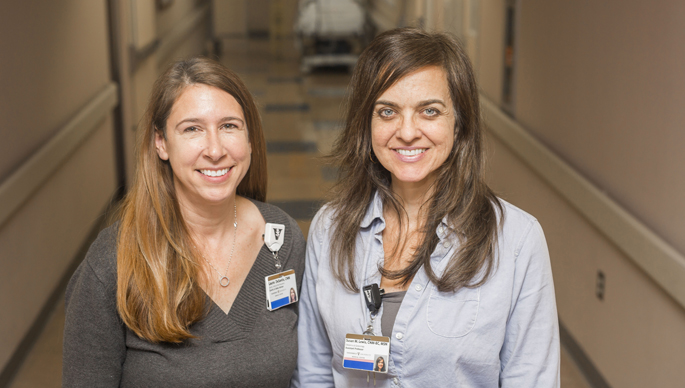
Vanderbilt University Medical Center (VUMC) is one of 24 institutions nationwide seeking to reduce the incidence of primary cesarean births through an initiative sponsored by the American College of Nurse-Midwives (ACNM).
The collaborative, Reducing Primary Cesareans Project, aims to improve the health outcomes for both mothers and families by focusing on reducing the prevalence of first cesarean sections, which are at high rates and rising.
“We are looking at reducing the number of cesareans in low-risk women,” said Susan Lewis, MSN, CNM, of the Vanderbilt Center for Women’s Health.
“The American College of Obstetricians and Gynecologists (ACOG) published a committee opinion in 2017 recommending hospitals and obstetricians make efforts to reduce these rates.
“The national C-section rate should be under 24 percent for this group,” said Lewis. “Nationally, it’s above 30 percent and has been increasing slowly over the past decade.”
The project is directed at a specific population of patients, often referred to as NTSV — nulliparous (first time delivering), full term, singleton and vertex (the baby’s head is the presenting part through the birth canal).
Vanderbilt’s NTSV primary cesarean section rate is 28.5, said Lewis, who is motivated by the positive results of other centers that implemented the project.
“The reported findings have been favorable in reducing the rates at the participating facilities,” Lewis said. “The initiative offers an approach to introduce culture change on labor and delivery units, and it’s working.”
Vanderbilt will promote spontaneous progress in labor, said Lewis explaining that the team will “work toward not interfering in the natural progression of a woman’s labor without evidence-based clinical indication.”
Vanderbilt, the first center in the Southeast to enroll, will launch its program in January. Most participating health systems are located on the East and West coasts, said Lewis, a co-facilitator of the Medical Center’s program.
Ronald Alvarez, MD, chair of the Department of Obstetrics and Gynecology, said the Medical Center is committed to the initiative to decrease primary cesarean delivery in low-risk women.
“This effort will not only enhance outcomes for the first time a woman is pregnant, but will also reduce her risk of needing a repeat cesarean with subsequent pregnancies and the risks associated with such procedures,” he said.
The 10-member team will be led by co-facilitator William (Josh) Kellett, MD, associate professor of Clinical Obstetrics and Gynecology, and Laurie DeSantis, MSN, CNM, quality and safety advisor for Women’s Health.
“We are looking forward to doing our part in improving women’s health and positively impacting future pregnancies. We know that if we can prevent the first cesarean, it is more likely that the mom can enter into her future pregnancies in better health,” Lewis said.















